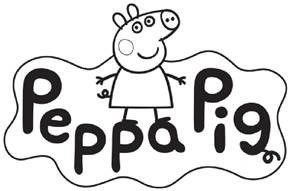Locations
Late last week, on 21 March 2019, the General Court dismissed an appeal by trade mark owner, Mr Xianhao Pan, in relation to an invalidity action brought by Entertainment One and Astley Baker Davies Ltd.
Entertainment One and Astley Baker Davies Ltd brought the invalidity action against EUTM Registration No. 11775509 TOBBIA and Device in Class 25 covering "clothing, footwear, headgear" in 2015. The EUIPO Cancellation Division held that the marks were not similar. Entertainment One and Astley Baker Davies Ltd had relied upon EUTM No. 10186261 PEPPA PIG and Device and copyright subsisting in the Peppa Pig device element. Entertainment One appealed the decision at the Board of Appeal and received a favourable decision in 2017. The Board of Appeal concluded that, as a result of the identity of the goods and the visual and conceptual similarities, the differences between the signs were not sufficient to dispel the existence of a likelihood of confusion.




In November 2017, Mr Pan brought an appeal to the General Court. The EUIPO defend the appeal and Entertainment One joined as Intervener. Mr Pan relied upon four pleas in law which we have discussed in detail below:
First plea: alleged infringement of the period for bringing an appeal
Mr Pan alleged that the Board of Appeal did not properly examine his plea that Entertainment One belatedly filed its appeal. Mr Pan maintained that the period for bringing the appeal began to run on 28 July 2016 (notification of the Cancellation Division’s decision) and expired on 28 September 2016. However, he submitted that the notice of appeal was filed with EUIPO on 28 November 2016, which was late. The General Court dismissed the first plea in law. Whilst the notice of appeal must be filed within two months of the date of notification of the decision, the written statement of grounds must be filed within four months. Although the Board of Appeal did not expressly rule on this point, the fact it dealt with the appeal, shows that it regarded the appeal as admissible.
Second plea: alleged that the documents submitted before the Board of Appeal were inadmissible
Mr Pan submitted that the Board of Appeal took into account documents which Entertainment One had submitted for the first time before it, even though those documents should have been deemed inadmissible. The documents constituted evidence from the Italian customs authorities of seizures of TOBBIA branded goods and further information regarding the copyrights relied upon. The General Court dismissed the second plea in law on the basis the Board of Appeal decision was based exclusively on a comparison between the marks and the resulting likelihood of confusion (nothing to do with the evidence submitted). In addition, the General Court held that it was not apparent that the Board of Appeal actually took the evidence submitted for the first time before it into account.
Third plea: alleging failure to state the reasons for the contested decision
Mr Pan alleged that the Board of Appeal failed to state the reasons for the contested decision. In its argument, both the EUIPO and Entertainment One noted that the Board of Appeal's decision was as a result of a clear and exhaustive analysis, which were even included in a section of the decision entitled ‘Reasons’. The General Court further noted that there is no obligation on the Board of Appeal to highlight all of the incorrect aspects in the first-instance decision – it is sufficient to state the reasons on which it based its own decision. The third plea in law was therefore rejected.
Fourth plea: alleging infringement of Article 8(1)(b) of Regulation No 207/2009
Mr Pan submitted that the Board of Appeal had erred, first in comparison of the signs, and second, in its assessment of likelihood of confusion.
Mr Pan argued that there were no similarities between the signs. From a visual perspective, he alleged that the Peppa Pig registration ‘depicts the design of a head resembling a pig whose style follows the elementary perception of a child’, whereas the TOBBIA registration has ‘graphical features that are not elementary but tend to humanize an animal, the tapir’. The General Court found that the Board of Appeal had considered the comparison of the signs in detail. It had found that the signs were similar to the extent they represented closely similar stylized illustrations of a pig. Whilst the Board of Appeal had noted that there were some differences between the signs, these were not capable of outweighing the similarity. The General Court further held that whether the public viewed the signs as two pigs or two tapirs did not alter the assessment of the visual similarity of the marks.
Mr Pan further submitted that the Board of Appeal had erred in its finding that there was phonetic similarity between the signs. The Board of Appeal found that there was a certain correlation between the element ‘peppa’ and the element ‘tobbia’, in the sense that both of those elements are disyllabic words containing the repetition of a strong consonant. Whilst the General Court admits, there are differences in the prefixes of the signs, it held the Board of Appeal was correct to note these similarities.
Finally, Mr Pan alleged that the signs were different from a conceptual perspective. He submitted that PEPPA PIG was a female pig, whereas TOBBIA was a male tapir. He also alleged that the tapir was a well-known animal in Italy as a result of the TV show, 'Striscia la Notizia’, which depicts a golden tapir. The General Court held that it is unlikely that the public will associate TOBBIA with a tapir, given that both signs contain various characteristics more readily associated with pig. As a result, the General Court concluded that the Board of Appeal did not err in finding that the signs at issue are similar.
Mr Pan also alleged that the Board of Appeal erred in its assessment of the likelihood of confusion. However, given that the General Court concluded that the Board of Appeal was right in finding that the signs were similar, there was also no basis for contesting the Board of Appeal's finding of likelihood of confusion. As a result the fourth plea in law was also rejected.
Entertainment One was successfully represented before the General Court by Hastings Guise and Fiona Morris of Fieldfisher.

